What are striking distance keywords and how to find them in 30 seconds?
Our Striking Distance Reports quickly identify keywords that are close to ranking on the first page of Google.
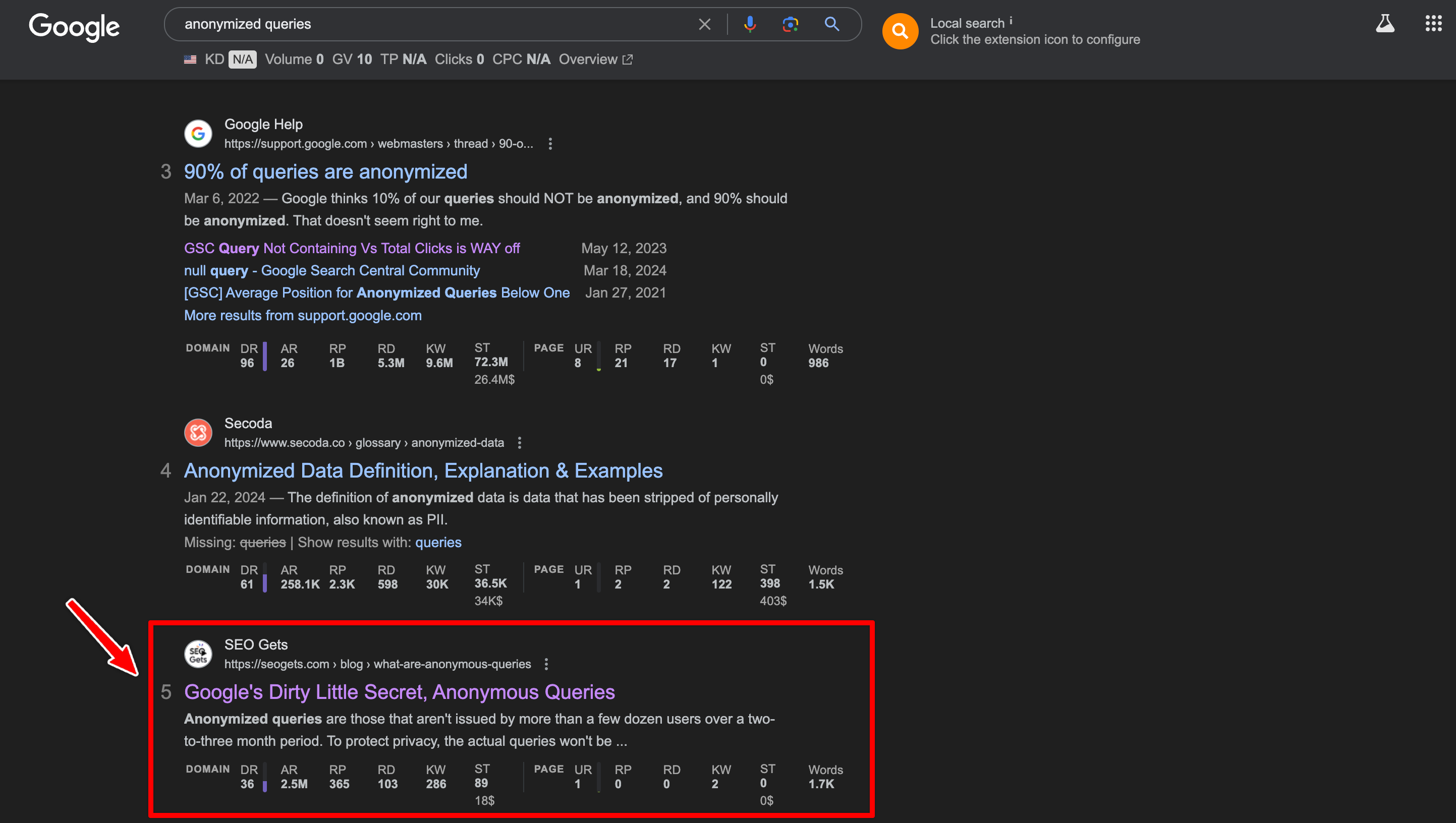
Our Striking Distance Reports quickly identify keywords that are close to ranking at the top of Google.
Striking distance keywords are search terms where your website sits just outside the most valuable positions in search results. These queries typically land between positions 5 and 20. Close enough that some smart optimization could push them into the top 3 positions where they’re most likely to be featured in AI Overviews and AI search results.
With the rise of AI search engines and Google’s AI Overviews, getting into the top 3 positions has become more critical than ever. Research shows that if you rank #1 in Google’s traditional results, you have a 25% chance of being used as a source in AI Overviews, and the higher you rank in Google’s top 10, the more likely you are to appear across AI search platforms like ChatGPT and Perplexity.
Why are Striking Distance Keywords Important to Optimize For?
Moving up just a few positions in search rankings can dramatically transform your visibility in both traditional search and AI-powered search engines. With AI Overviews and AI search becoming increasingly prominent, ranking in the top 3 positions is more valuable than ever.
According to research analyzing 25,000 real user queries across AI search platforms, if your website ranks #1 in Google’s traditional results, you have a 25% chance of being used as a source in AI Overviews. The higher you rank in Google’s top 10, the more likely you are to appear in AI search results across platforms like ChatGPT, Perplexity, and Google’s AI features.
Here’s why focusing on striking distance keywords (positions 5-20) should be a priority in your SEO strategy:
AI Search Inclusion: Google already recognizes your site as relevant for these terms. Moving from position 8 to position 3 significantly increases your chances of being featured in AI Overviews and other AI search results.
Cost-effective Authority Building: The work needed to optimize striking distance keywords is usually much less than what you’d need for highly competitive terms, yet the AI search inclusion gains can be substantial.
Future-Proof SEO: As AI search becomes more prominent, having strong positions across multiple related terms creates more opportunities for inclusion in AI-generated responses.
Faster Results: Unlike the often months-long grind of ranking for new competitive keywords, optimizing striking distance terms can deliver noticeable improvements within weeks.
Traditional rankings still matter because AI search systems preferentially select from Google’s top-ranking results. However, the focus has shifted from creating the “best page” to providing the “best answer” for specific user questions.
How to use SEO Gets to find striking distance keywords quickly and easily.
Step 1: Start by choosing the website you want to analyze for striking distance keywords.
Click on the reports tab at the top of the screen.
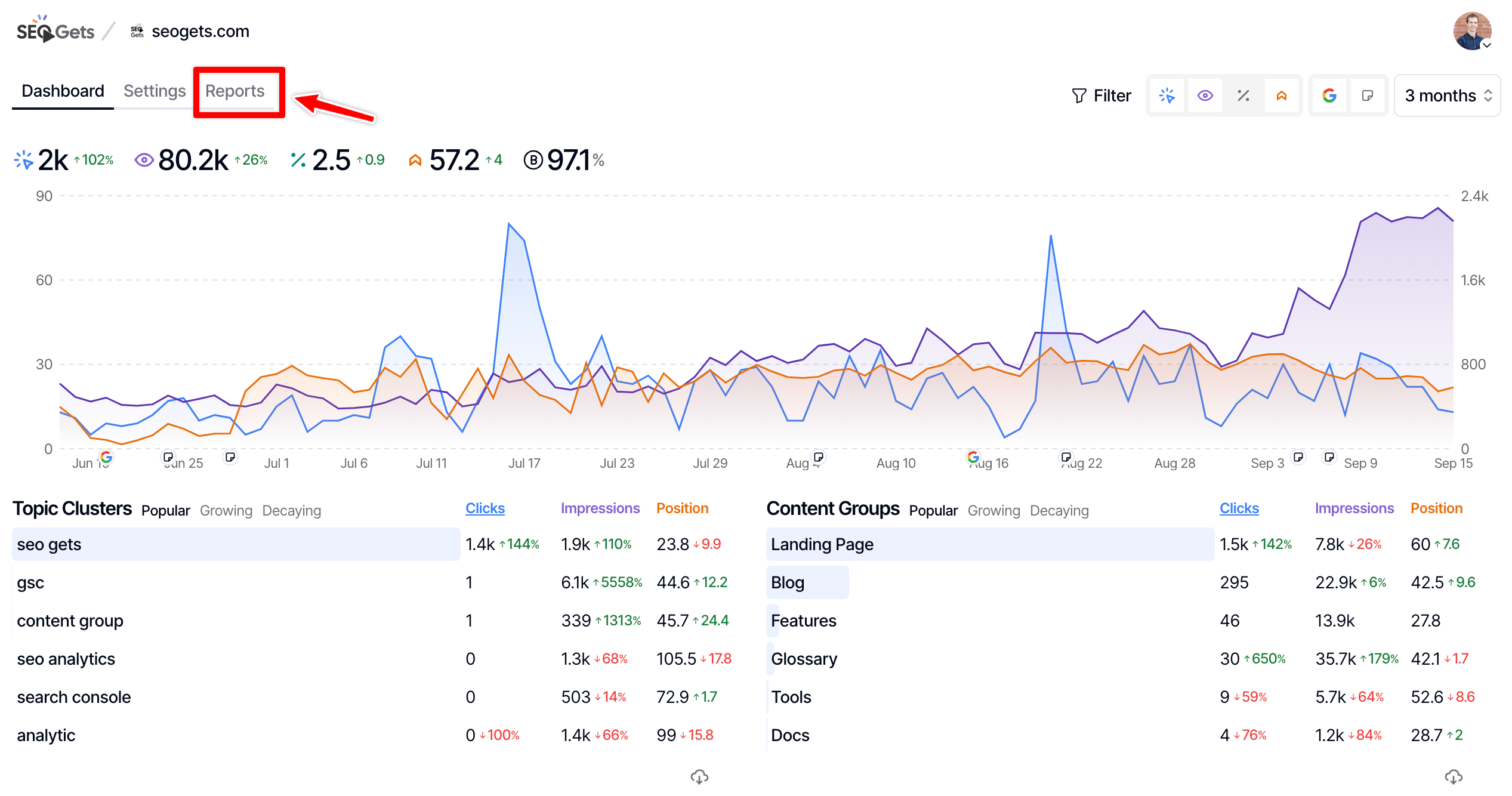
Step 2: Select the striking distance keywords report.
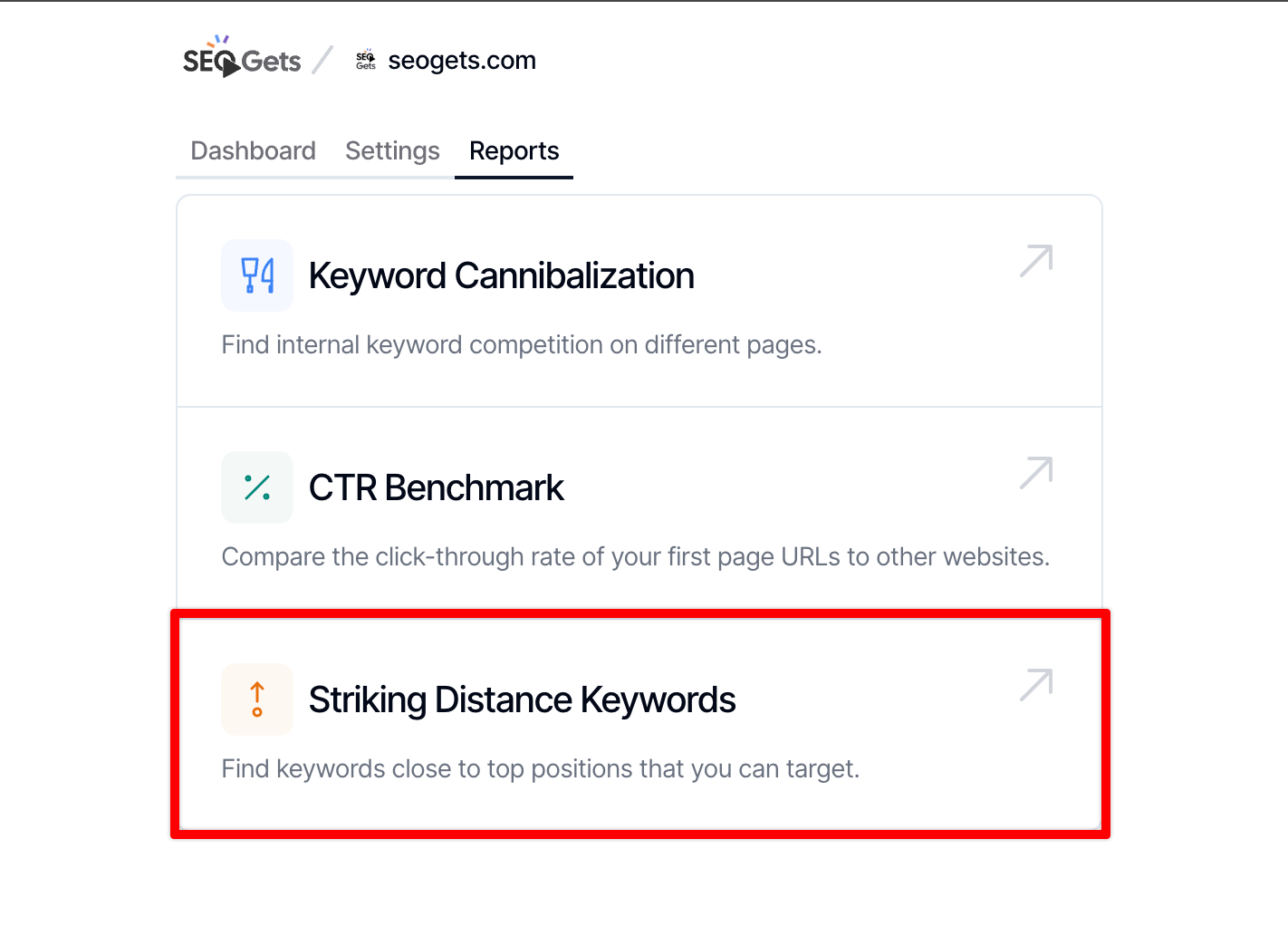
Step 3: Select what positions you wish to filter by.
I generally like positions 5 to 20.
However, you can target the first page with positions (2 to 10) or page 2 with positions (10 to 20).
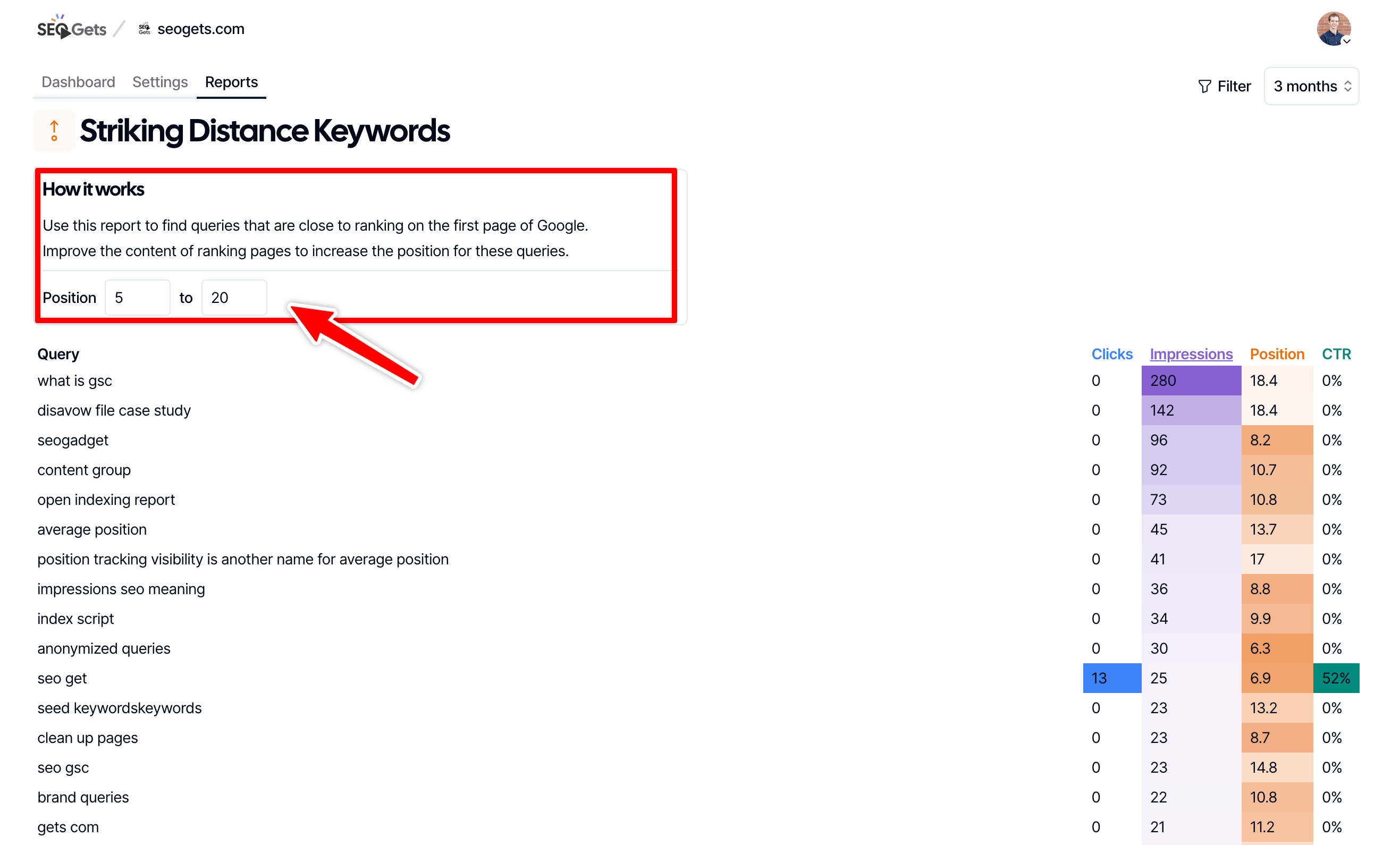
Step 4: Find queries that you want to target.
You can see what page(s) are ranking for that term by clicking the arrow to the left of the query.
You can also select the SEO Gets symbol to filter by that keyword in your dashboard or you can select the Google symbol to see the query in the SERPs.
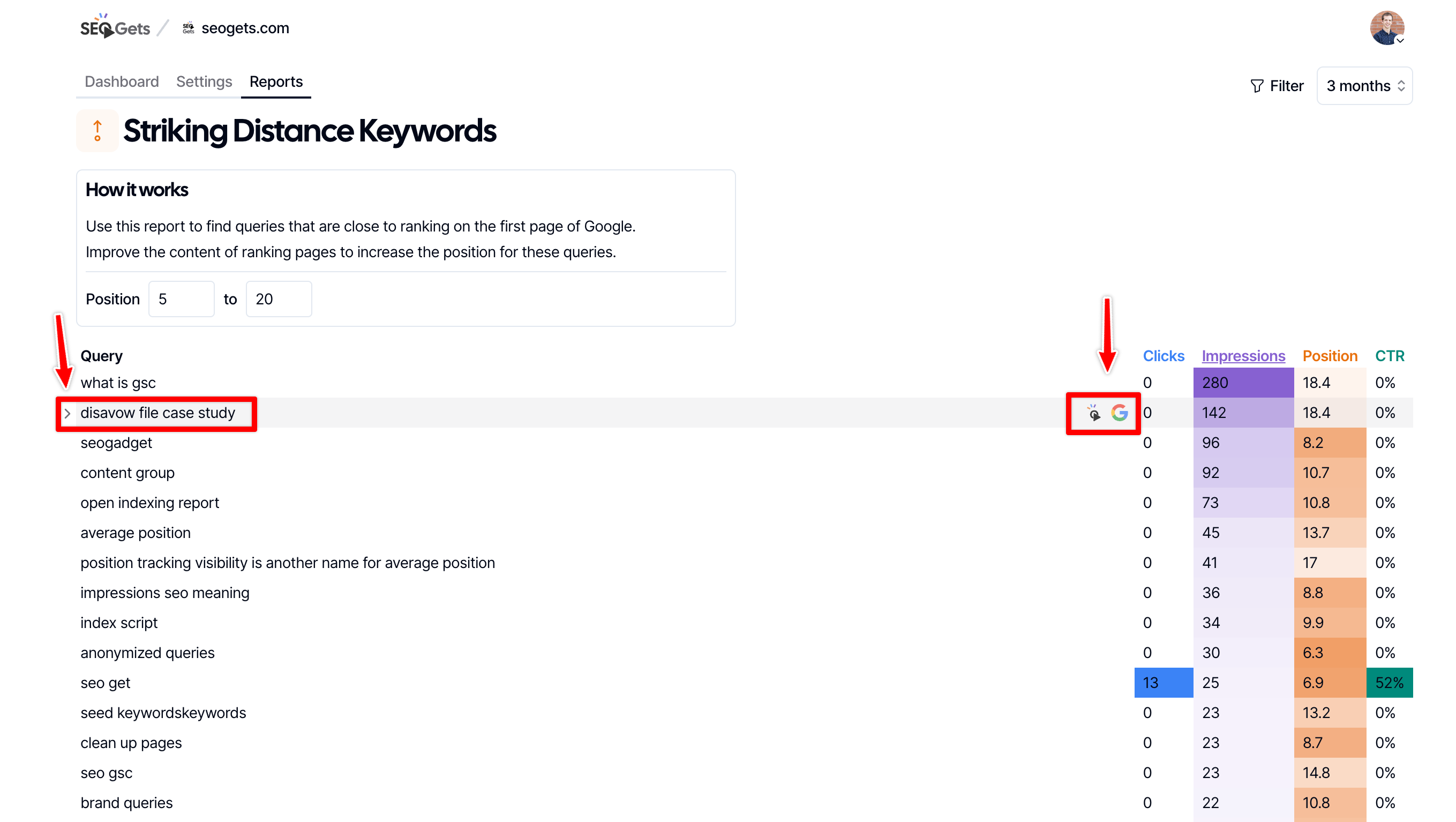
How to Prioritize Your Striking Distance Keywords
Not all striking distance keywords are worth the same effort. Use this framework to identify your best targets:
- Search Volume Assessment: Focus on keywords with good monthly search volume. A position 11 keyword with 1,000 monthly searches usually offers more potential than a position 12 keyword with only 50 searches.
- Competition Analysis: Figure out how hard it will be to break into the first page by looking at:
- Domain Authority of competing websites.
- Content quality and depth of top results.
- SERP features that might limit organic click potential (featured snippets, ads, etc.).
- Business Relevance: Assess how well the keyword aligns with your business goals:
- Transactional keywords (showing buying intent) often deserve highest priority.
- Informational keywords that support your conversion funnel come next.
- Navigational keywords (searching for a specific brand) may have limited value unless they’re for your brand.
- Current Performance: Consider how close you already are to page one:
- Position 11-15 keywords typically need less work than position 25-30.
- Keywords showing positive movement over time may have momentum you can build on.
- Seasonal Factors: For seasonal businesses or topics, prioritize keywords approaching their peak search period for maximum impact.
AI Search Inclusion Potential: What to Expect When Rankings Improve
Understanding the potential for AI search inclusion when moving up in rankings helps prioritize your optimization efforts. Based on research analyzing 25,000 real user queries across AI search platforms:
Position #1: 25% chance of being used as a source in AI Overviews.
Top 3 positions: Significantly higher likelihood of inclusion across AI search platforms.
Top 10 positions: Strong potential for discovery through query fan-out techniques.
Effective Optimization Strategies for Striking Distance Keywords
Once you’ve identified and prioritized your striking distance keywords, focus on these practical strategies to move them into the top 3 positions:
Intent-Focused Content Optimization
Understand the Specific Question: Instead of optimizing for the “best page,” focus on providing the “best answer.” Analyze what users are really asking when they search for your target keyword.
Match User Intent Precisely:
- Informational queries: Provide direct, comprehensive answers early in your content
- Commercial queries: Include clear comparisons, benefits, and next steps
- Transactional queries: Make the conversion path obvious and frictionless
Answer the Question Immediately: Place your most relevant answer within the first 100-200 words. AI search engines look for precise, relevant answers to specific questions.
Use Clear Structure: Organize content with descriptive headings that directly address user questions. This helps both users and AI systems quickly identify relevant information.
Content Enhancement Based on Top Performers
Analyze Top 3 Results: Look at what’s currently ranking in positions 1-3 for your target keyword:
- What specific questions do they answer?
- What format do they use (lists, steps, comparisons)?
- What information might be missing that you could add?
Fill Content Gaps: Add information that top-ranking pages don’t cover, but focus only on what’s relevant to the user’s intent.
Improve Readability: Use shorter paragraphs, bullet points, and clear subheadings to make your content easier to scan and understand.
On-Page Optimization for Intent
Title Tag Optimization: Create titles that directly address the user’s question or need:
- Include your target keyword naturally
- Address the specific intent (e.g., “How to,” “Best,” “Compare”)
- Keep under 60 characters
Header Optimization: Use headers to structure your answer:
- H1 should directly address the main query
- H2s and H3s should answer related sub-questions
- Include variations of your target keyword naturally
Meta Description: Write descriptions that promise a clear answer to the user’s question and encourage clicks.
Internal Linking for Authority
Link from Related Content: Add internal links from other relevant pages on your site to strengthen the authority of your target page.
Use Descriptive Anchor Text: Link with text that describes what users will find, including relevant keywords naturally.
Create Content Clusters: Develop related content that supports your main target page and link them together strategically.
Measuring Success and Timeframes
To track how well your striking distance keyword optimization is working, keep an eye on these key metrics:
Essential Metrics to Track
Ranking Position Changes: The most direct measure of your optimization success:
- Track weekly position changes for each target keyword.
- Calculate the percentage of keywords that moved to page one.
- Monitor the average position improvement across all keywords.
Organic Traffic Growth: Measure the impact on actual visitors:
- Compare traffic to optimized pages before and after optimization.
- Analyze traffic patterns by landing page.
- Segment new vs. returning visitors.
Click-Through Rate Improvements: As rankings improve, your CTR should increase:
- Compare CTR before and after optimization efforts.
- Benchmark against industry averages for different positions.
- Identify patterns between title/description changes and CTR improvements.
Conversion Metrics: Ultimately, measure business impact:
- Track conversion rate changes on optimized pages.
- Calculate additional revenue or leads generated.
- Measure changes in engagement metrics like time on page.
Try out our Striking Distance Reports for free.
I’ve seen striking distance keywords work wonders for countless websites. They’re a powerful tool in your SEO arsenal, offering quick wins and long-term gains.
The best part? You can try it out for free right now. Just head over to our website and sign up for a trial – no strings attached.
Together, these tools can supercharge your SEO performance.
So why wait? Try out SEO Gets today.
✨ Interested in simplifying your SEO analytics workflow? Try SEO Gets for free.
